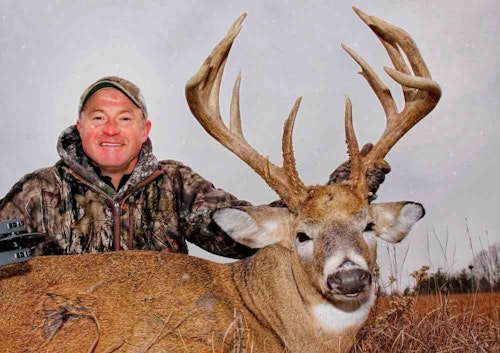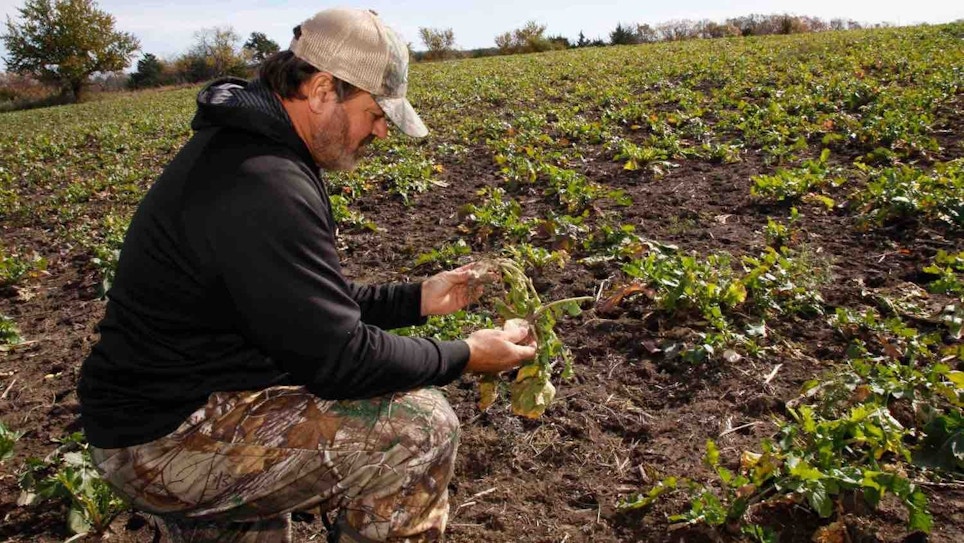Maybe you forgot. Maybe you picked up a new hunting lease? Maybe your farming uncle just gave you the green light to use an acre of land for food plots. Regardless of the reason, a fall plot could be in your future. Although a fall food plot has the connotation of being too late in the game to make a difference, the positive attributes of a newly sprouted green patch are many.
The Long Gamble and Benefits
Do not let the name fool you. A fall plot begins in summer. A benefit of that is changing weather patterns with an increase in moisture as fall nears. If a few showers fall over freshly planted seeds, then Shazam — a whitetail magnet springs forth on your hunting property.
That very factor of new growth is the main benefit of a fall plot. Its attractive nature is more tempting than when President Biden passes an ice cream shop. Deer love new, tender and lush browse, bypassing the dry goods of late summer for anything with a succulent texture.
Sure, you may be surrounded by a sea of agricultural crops, but many of those succumb to maturity and thus lose their juicy character. You still may have to compete with those crops as deer love to eat buffet style, but as those crops dry and begin to travel to market, your fall plot increases in appeal day by day. By the rut, you could have one of the most alluring dining parcels in the neighborhood with a golf course temptation.
Another reason fall food plots rock is their backup nature. Dry spells and drought will affect your property management goals occasionally during your hunting tenure. A fall food plot could be the saving grace if a spring plot fails. By monitoring forecasts, choosing proper seed mixtures and preparing equipment for speedy planting, you could have a Plan B launched to replace a spring plot that hit a moisture roadblock.

Steps in the Right Direction
Whether your fall plot conception is the main plan or a backup, prepare your plot in advance. For starters, keep it manageable. I have hunted too many properties where the manager believes more is better. There is nothing wrong with lots of deer nutrition, but putting it all in one basket creates a monstrosity to hunt. Instead of a huge food plot, consider hunting plots scattered about with varying fall food stations in a huntable layout. If you build a parcel wider than a comfortable bow shot, then you’re out of luck when deer walk along the opposite side instead of near your stand or blind. Precisely plan the layout to avoid blunders such as planting hidden corners. Nooks and distance provide deer ways to feed, but hide in plain sight.
When helping my buddies with plots, I use the distance calculator tool on my HuntStand hunting app to determine size and position of the plot in relation to deer habitat. Aerial views and topographical features assist in avoiding locations deer could duck into, while measurement tools guarantee plots where you can shoot across if required. I also carry my laser rangefinder to confirm shooting distances. Finally, take into consideration predominate winds for the period you will hunt the plot. The use of treestands, portable or permanent blinds could add additional tweaks to your fall food plot plan, and you definitely want them set downwind.
Even if your fall plot is a backup, it still requires the expertise of a corporate farmer. Soil samples reveal if you need to lime and how much fertilizer could be required for optimum tonnage. Your local National Resources Conservation Service office has taxpayer-funded advice to get you started down the road to healthy soil treatment. From there you may have to hire a consultant or pay a local farmer to aid in execution.
Regardless, most seed varieties for fall plots need to be planted anywhere from one to two months before the first frost. This ensures they germinate and provide attractive nourishment before a stunting frost blankets the ground. Do the math. Depending on your latitude, your planting window extends from July into September. Before this planting window arrives, you need to have soil tests completed, ground tilled, fertilizer spread and seeds in hand to plant as you wait for a moisture event to arrive.
Although the early bird gets the worm, note that if you do plant too early, it may require you to mow, especially if moisture spurs a bumper crop. You want your fall plot to be browse worthy, not in need of a Brush Hog to get through it. Another disadvantage to planting too early in summer is weed competition; by waiting longer, your food plots seeds won’t have to compete with weed seeds carried by the wind into your manicured soil.

Buck Buffet
Your fall food plot may be competing against soybeans or corn, so give whitetails something different. Distinctive regions of the country fair better for certain fall food plot seed varieties. Your NRCS office, expert land manager or consultant can offer you options. Make sure that whatever you choose matches your soil test, climate and moisture potential.
In today’s inflationary environment, economical farming is as challenging as storing top secret documents by high-profile government officials. Hardy crops that prosper in many fall locations include rape, kale and turnips. Green with a root reward creates a bonus, especially for northern, frigid climates. Other hardy options include winter wheat, oats, rye, winter peas and clovers in a moister environment.
Seed mixtures or blends also should be considered over a single crop variety. Ani-Logics, Antler King, Mossy Oak BioLogic, Whitetail Institute and many other food plot seed companies offer a variety of fall blends to fit your planting needs. Depending on the mixture, some may grow quicker and gain more browsing attention while other blends mature slower to provide nutrition later as winter sets in. And regardless of whether you blend the crops together or strip farm them near each other, consider adding in a spring jumpstart such as winter wheat or clover. When warmth returns again in spring, these varieties green back up quickly for an energy boost to does carrying fawns and bucks sprouting antlers.
My last four bow killed whitetails passed by me on their way in and out of fall food plots. Am I a believer? Antler inches do not lie.
In-the-field images by Mark Kayser







